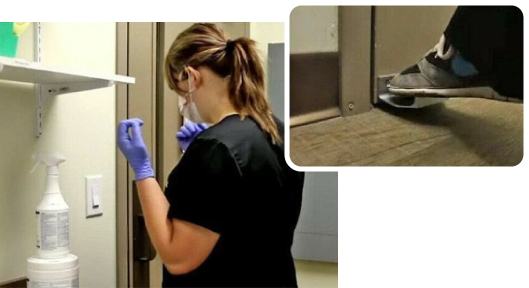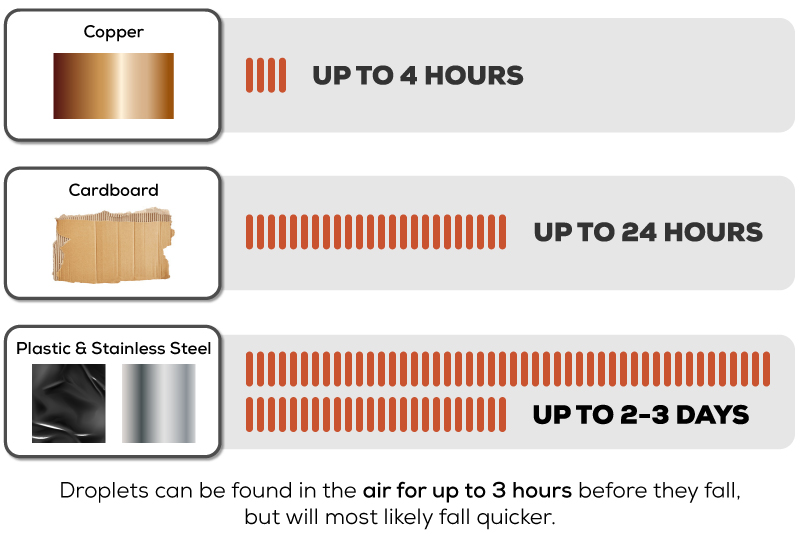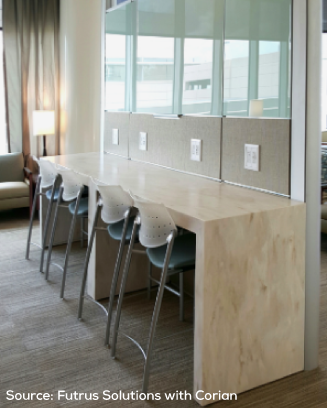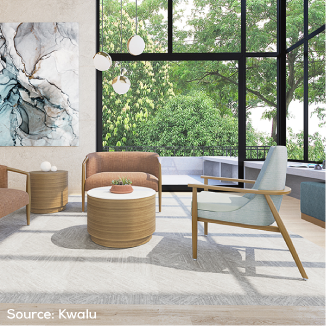Material Selections to Prevent the Spread of COVID-19 in Healthcare Facilities
-
Category
Studio-Healthcare, Innovation -
Posted By
Schmidt Associates -
Posted On
Aug 04, 2020
By Elizabeth Bishop, Interior Designer specializing in Healthcare.
The COVID-19 pandemic was an unexpected blow to the healthcare system. Just weeks into the pandemic, we were talking about dramatic changes to how hospitals and other healthcare facilities should be designed and operated in the future.
If you didn’t have a renovation already in the pipeline, you may not be in a position to overhaul the design of your facility anytime soon. One of the most affordable upgrades you can make in the short-term is swapping out fixtures and materials used in your facility to prevent the spread of COVID-19 among patients and staff.
COVID-19 on Surfaces
Research is showing that COVID-19 can live on surfaces for a significant amount of time. How long exactly varies based on the type of material and the surrounding conditions, but it can range from hours to days.
In hospitals and other healthcare settings, keeping surfaces clean and preventing cross-contamination is already a top priority. But the current pandemic has forced facilities staff to reevaluate their practices.
As designers, we can help improve the cleanliness of healthcare facilities by specifying the right materials for both clinical and non-clinical areas. Even surfaces or spaces you might not consider high risk can become contaminated with COVID-19 and must be considered.
When we specify hygienic materials, we look at all surfaces in patient rooms, exam or operating rooms, waiting areas, nurses stations, and other areas. These surfaces include:
- Doors and door handles
- Countertops and tables
- Furniture, exam tables, seating
- Sinks, faucets, toilets/urinals
- Bathroom stalls and lockers
- Storage cabinets, storage closets, shelving
- Patient room amenities, such as side tables and food trays
- Room dividers in multiple occupancy rooms and emergency departments
- Nurses stations and computer stations or carts
- Railings and handrails
- Medical offices
Hygienic Materials
We choose materials for these surfaces that are less likely to support pathogen growth and spread. Some of the characteristics that are becoming even more important in a COVID-19 world include:
Touchless
Hands down, the best way to prevent the spread of COVID-19 on surfaces is to avoid touching them in the first place. If your facility has not already made the transition to touchless faucets in restrooms and exam areas or swapped doors with handles for those that open with a foot pedal or hand wave, now is the time.

Antimicrobial
Many materials are available with antimicrobial properties. This means the surfaces themselves help to kill pathogens and prevent cross-contamination. There is still some debate about this technology, as it also kills “good” bacteria. However, it can be an option worth exploring for some applications.
Countertops and metal fixtures, for example, can be manufactured with antimicrobial additives. Antimicrobial coatings with hydrophobic compounds, silver ions, or copper can also be applied to some existing surfaces but need to be reapplied periodically. Paint with antimicrobial ratings is also available for walls and other surfaces.
Fewer Seams
Furniture made of multiple pieces or materials inevitably have seams where these pieces connect. Seams are difficult to clean, providing another safe harbor for pathogens like COVID-19. Even flooring with seams can be a concern.
Heat-welded resilient flooring with a seamless cove base and furniture made of homogenous materials like solid surface, plastic, or resin are good options for healthcare facilities.
Highly Cleanable
In a healthcare setting, a material is only as good as its ability to be sanitized. Furniture, fixtures, and surfaces must be able to stand up to strong commercial cleaners and bleach. Materials that will deteriorate or corrode over time due to frequent, harsh cleaning practices are often not practical.
We also recommend using consistent materials across your facilities. This streamlines the cleaning products and protocols for your staff and helps ensure proper and consistent sterilization everywhere.
Non-Porous
Porous materials, such as wood and woven textiles, allow viruses and bacteria to hide and grow. These materials are difficult to effectively clean and cannot be bleached. This makes them a risk in a healthcare setting. Replace doors, shelving, or furniture made of wood or other porous materials with things like glass, metal, acrylic solid surface or high-density polyethylene (HDPE). Replace porous upholstery with coated or non-woven fabrics, such as vinyl or silicone.
If you’d like to talk about making material swaps or other design changes in your healthcare facility, connect with one of our experts.









